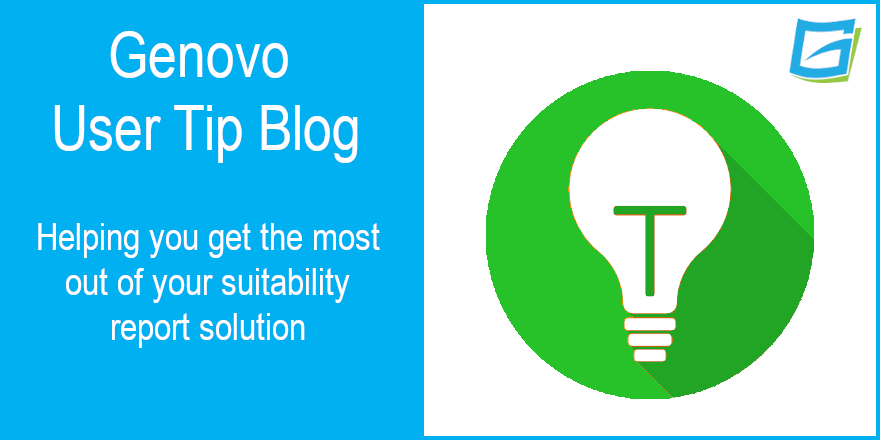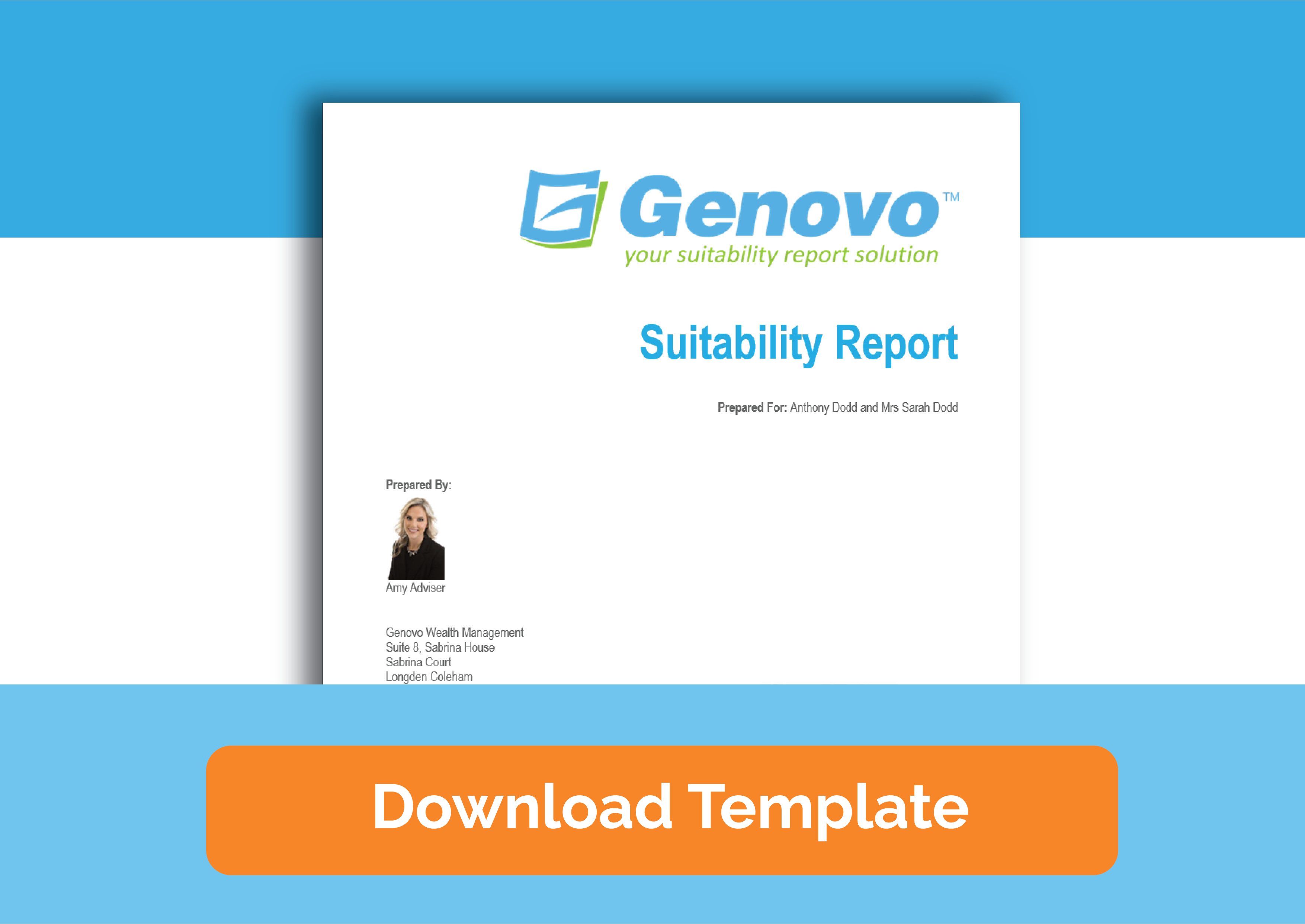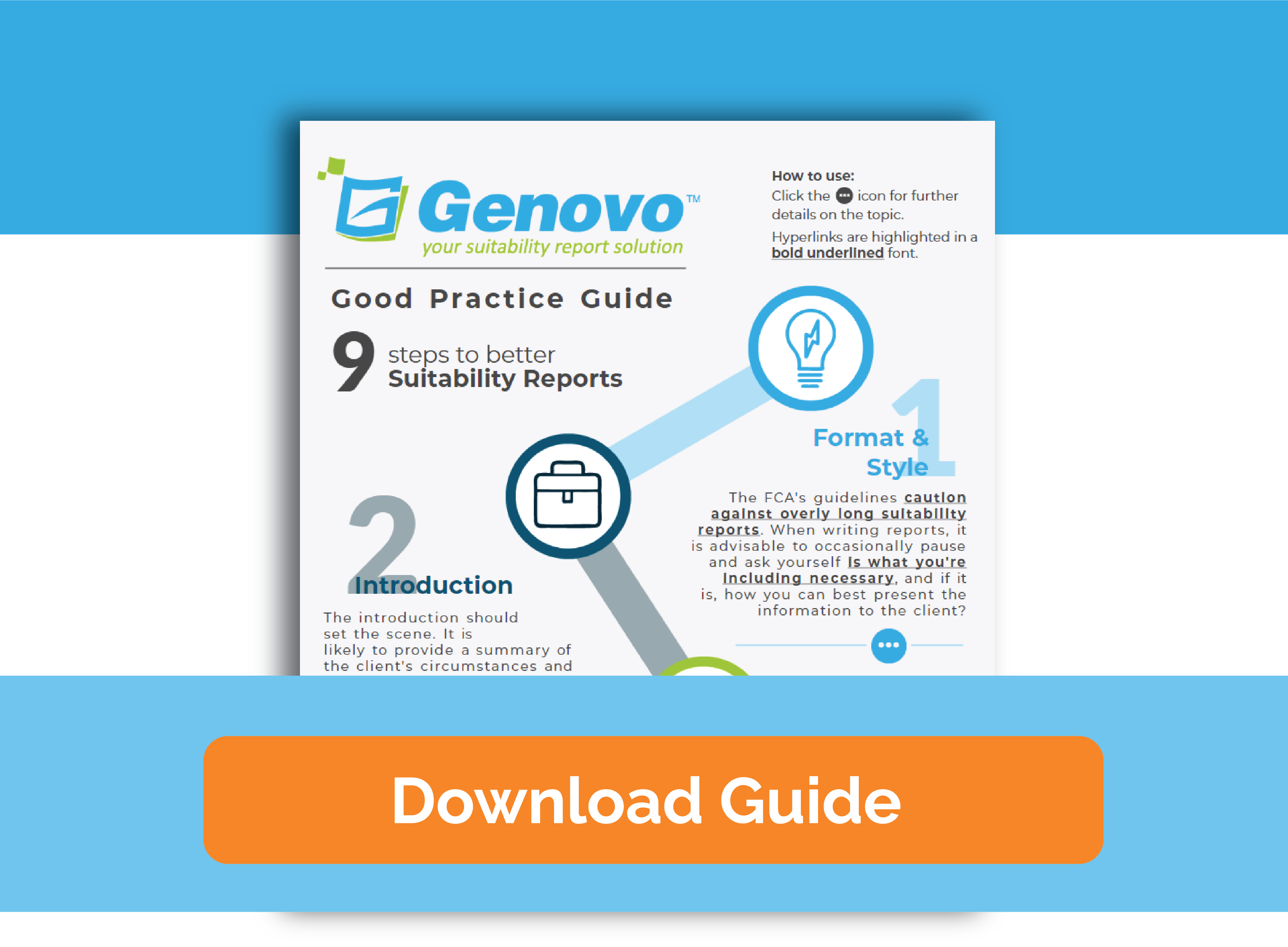
Reusable, Repeatable Reports
Simon Large
 |
IMPORTANT – This user tip relates to an older version of Genovo. Although much of the content and many of the concepts still apply to the current version of Genovo, the screenshots and some instructions may no longer be accurate. |
At Genovo Towers, we have a mantra of “Work smarter, not harder”. Of course, we end up working hard regardless – much as I’m sure you do – but being smart about our investment of time and energy means we get more done, more efficiently.
With the end of the tax year fast approaching and the rush that typically ensues to make use of clients’ annual allowances, I thought this would be an ideal time to re-cap on one of the ways that Genovo helps its users to “work smarter” by creating standardised pre-configured report frameworks (or suitability report templates as we like to call them), which once created can then be used repeatedly as the basis for creating future reports, thereby significantly speeding up the report creation process for you (and you users).
This user tip explains how you can create a report template which can then be used repeatedly as the basis for writing simple ISA investment reports. However, many of the concepts and principles highlighted will apply equally to a range of other commonplace advice scenarios.
Creating the report template
It’s always going to prove quicker to use an existing report as the basis for creating a report template rather than creating one from scratch. Therefore, in the first instance I’d suggest you scroll through your client / report library to find a report which most accurately reflects the advice scenario you’re creating the template for, which in this instance is a lump sum investment into an ISA.
Having located just such a report you will then want to clone it – this will create an exact copy of the report which you can then edit to remove all of the client specific information from it.
Introduction section
The majority of the steps within this section are client specific and you should avoid including pre-existing information within them when creating a template. Although, to save a bit of time you may wish to have some standard client objectives selected e.g. ‘Make use of your ISA allowance for the current tax year’ in the Client Objectives step.
New Investment Recommendation section
In this section, as with the Introduction section, remove all reference to client specific information. In the Plan Summary step. If not already selected, choose Stocks and Shares ISA from the Investment dropdown option and delete any client-specific information from the other boxes.

If you only use one platform / provider for your Stocks and Shares ISAs, then you may wish to select it in the Provider dropdown. Once you are satisfied, scroll down and select Save to return to the Plan Summary step.
If you do only use one platform / provider, you may also find it useful to preselect some Advice Reasons in the Why Provider / Plan step, and you could even add some of the typical standard charges that the provider levies on their ISA investment in the Plan Charges step. However, outside of this, I wouldn’t add any further information in this section.
Recommended Investment Strategy / Client Risk Profile section
If you consistently use the same risk profiling tool you may wish to complete some of the fields in the Attitude to Risk step.

You may also recommend specific portfolios based on a client’s risk profile. In which case, here is an opportunity to demonstrate a real strength of the Genovo Report Template functionality. You can create a report template for each client risk profile and then include the corresponding investment strategy associated with that risk profile within the Recommended Investment Strategy step. Once you have created one template, you can then clone it and edit it to reflect each different risk profile and its corresponding investment strategy.
Important Information section
As with the Introduction section, I would avoid inputting too much information here due to the client and context dependent nature of this section.
Creating the report template
Having now sanitised your report within the Report Builder you can convert it into a template to use as the basis for creating your new ISA reports in the future. This is easily achieved by clicking the convert to template icon at the bottom of the page.
Converting the report to a template creates an exact copy of the report, so all the detail you have retained within the report, will be included within the suitability report template that you create.

You will be directed to a new page where you’ll be prompted to give the template a name and add some searchable tags (keywords) should you wish to. Tags can be used to help highlight to you (and your users) that the particular template contains certain key content / concepts such as being related to a specific provider, risk profile or investment strategy.

On clicking save you’ll be directed to your Report Template Library where you’ll see the template has now been added to your library.
Amending templates
Now you‘ve finished creating your report template, you’ll find it saved to the Report Template Library. From here, if you have Account Owner / Admin permissions, you can opt to share this report template with the rest of your users by selecting the tick box in the share column.
You can also make amendments to this report template by clicking on the report template builder link and then making the changes like you would to any suitability report in the Report Builder.
As mentioned previously, you can also clone the report template. Why would you want to do this? Because you may wish to create a number of slightly different versions of the template to reflect a range of client circumstances such as the different investment strategies for different rick profiles. This isn’t limited to ISA business either, you can produce templates for the most common pension switching scenarios or produce one for pension decumulation strategies.
While each client is different, there are many themes with the solutions that can be offered and this is where building your own template library can really cut down on your workload. You can even clone the Genovo example report templates and create your own custom versions of them.
Simon’s summary
Following this article, you should be able to create a variety of report templates for a whole host of circumstances. It’s important to bear in mind though, that utilising a template does not result in the suitability report becoming a box ticking exercise – thought and consideration still needs to be used when writing the report and you will still need to demonstrate that you ‘Know Your Client’ and why the recommendations being made reflect the client’s individual needs and objectives.
While this whole process may involve some work upfront, you will find that it will save you (and your users) a lot of time in the future. Maybe it shouldn’t be “Work smarter, not harder” but “Work smarter to work harder”.
Further reading
You’ll find loads more really useful information in:
- Genovo’s series of User Tip blogs;
- the extensive Genovo Knowledge Base;
- the collection of really useful Genovo matrices;
- the ever popular Genovo video tutorials; or
- by attending one or more of our regular monthly training webinars.
Of course, if you’re still stuck, or just need a helping hand, you can always submit a support ticket and we’ll get straight back to you.
Finally – make sure you don’t miss any of our hints & tips – subscribe and get email alerts when we update our blog.

